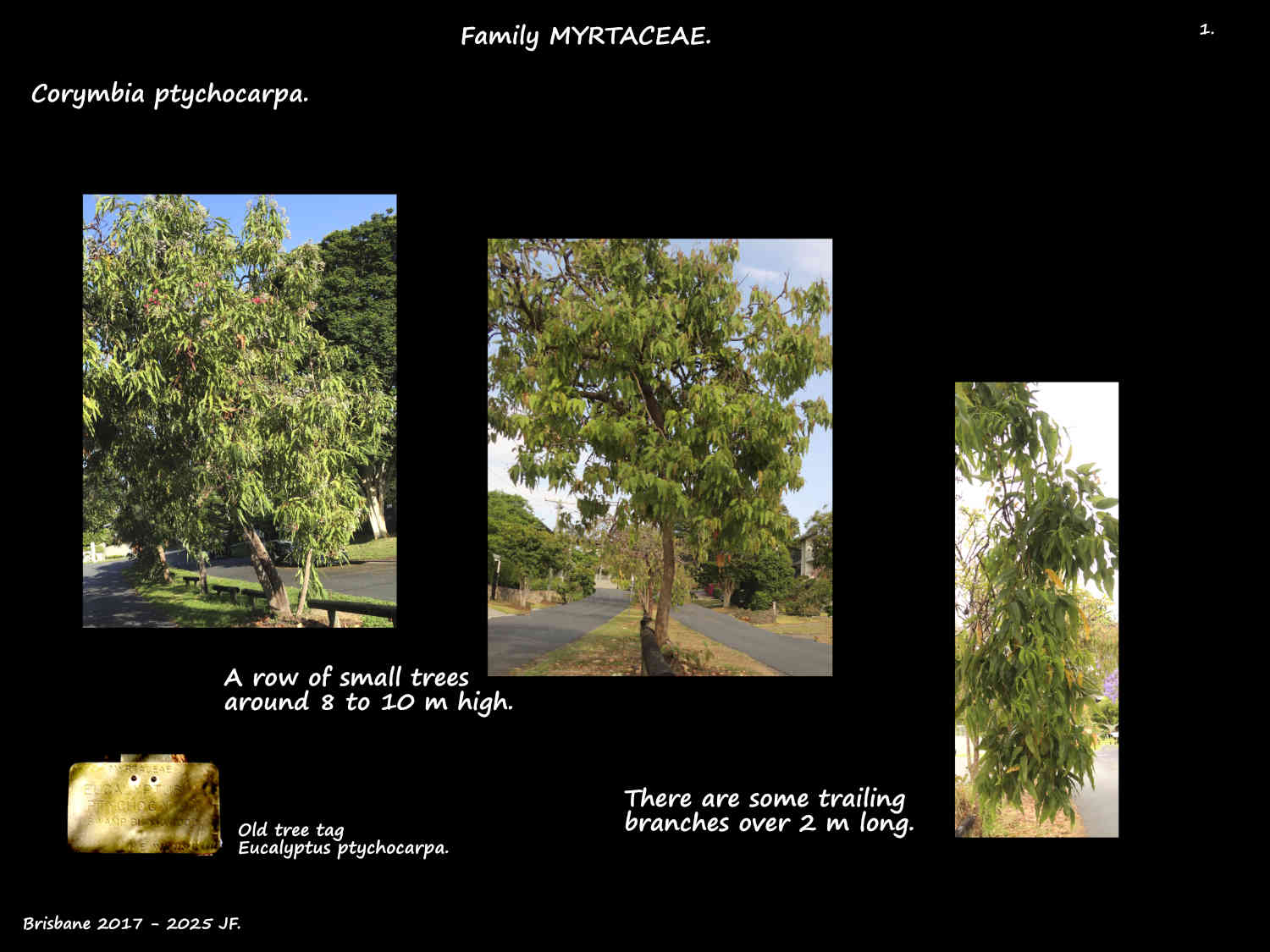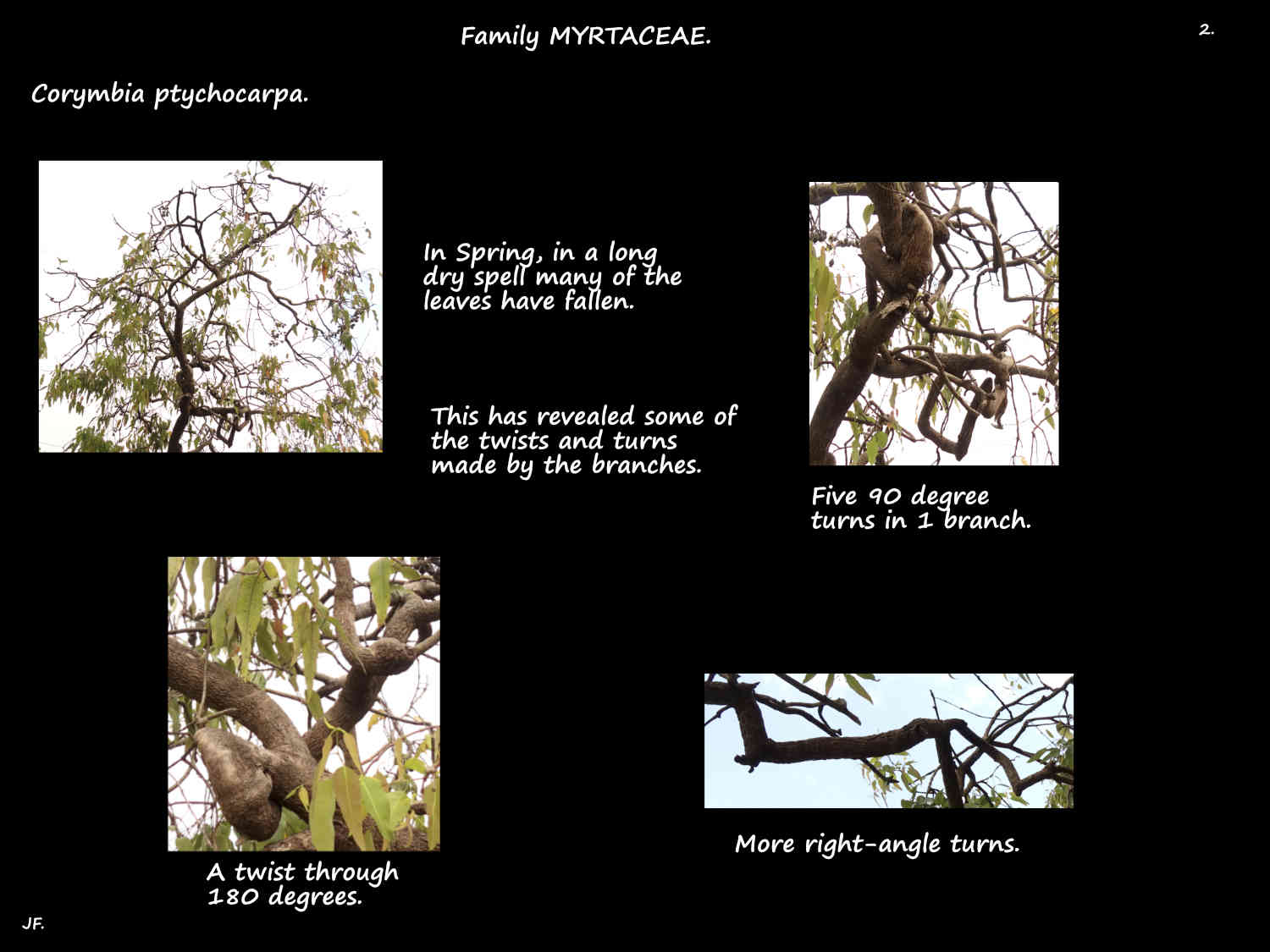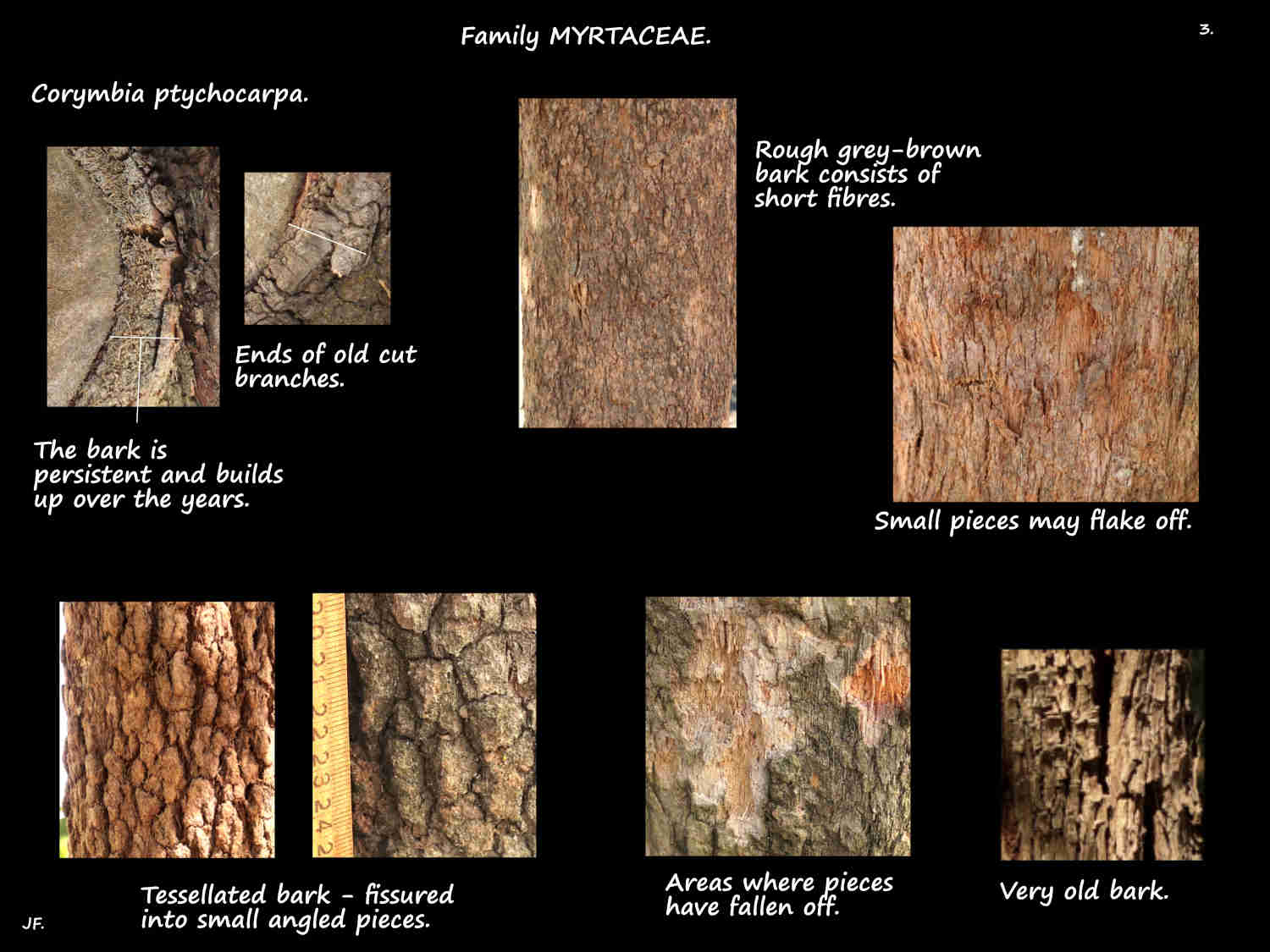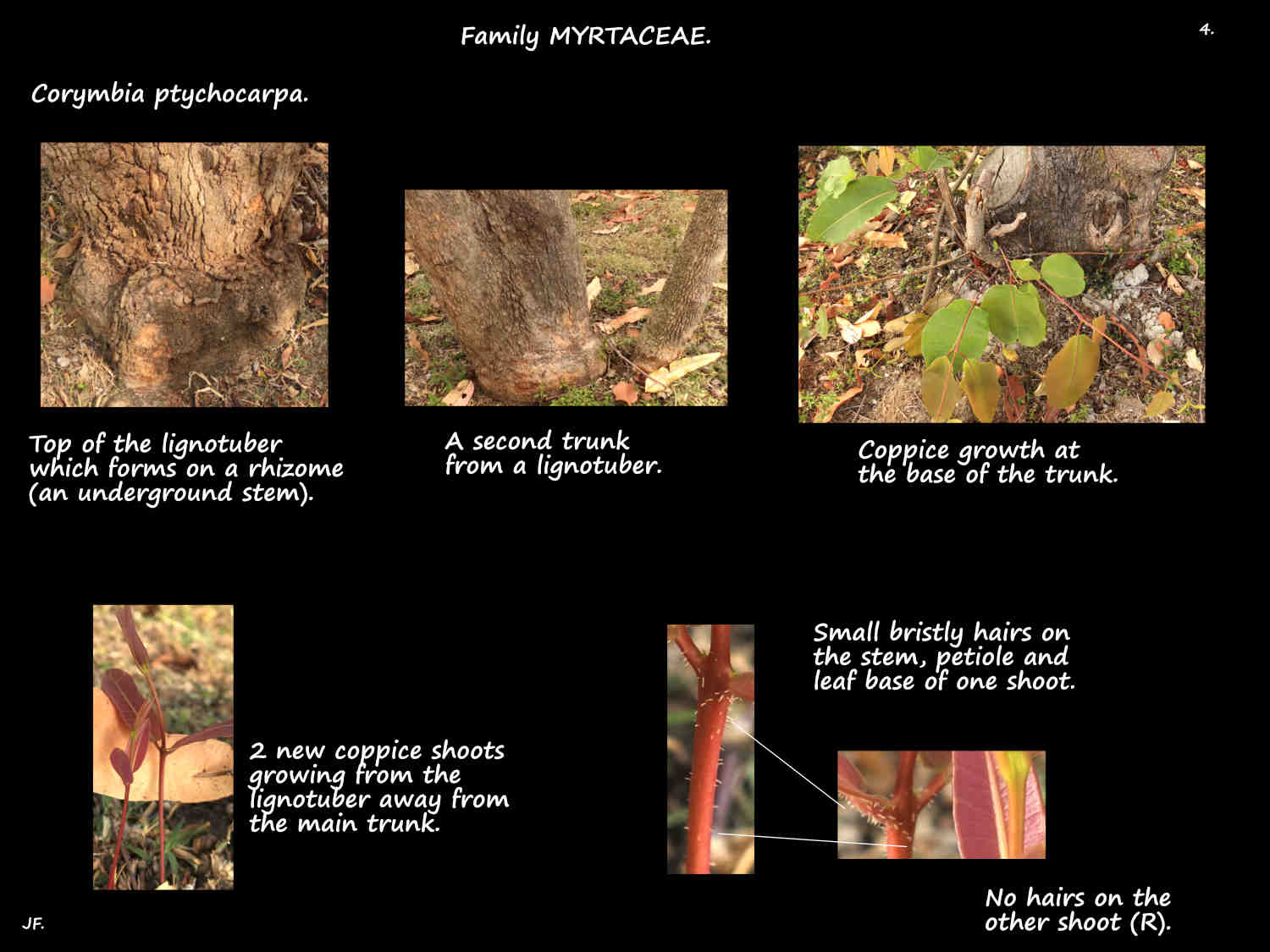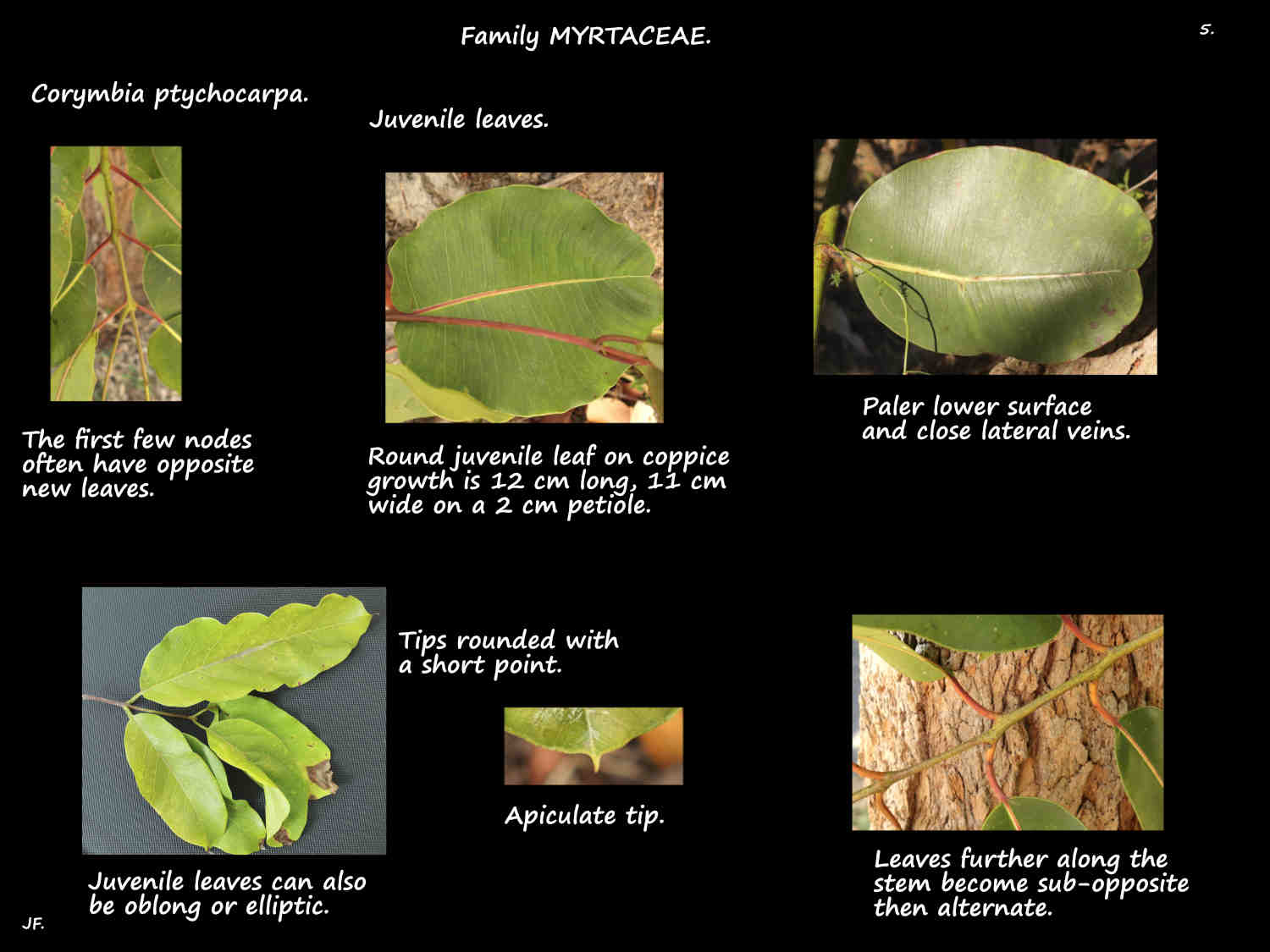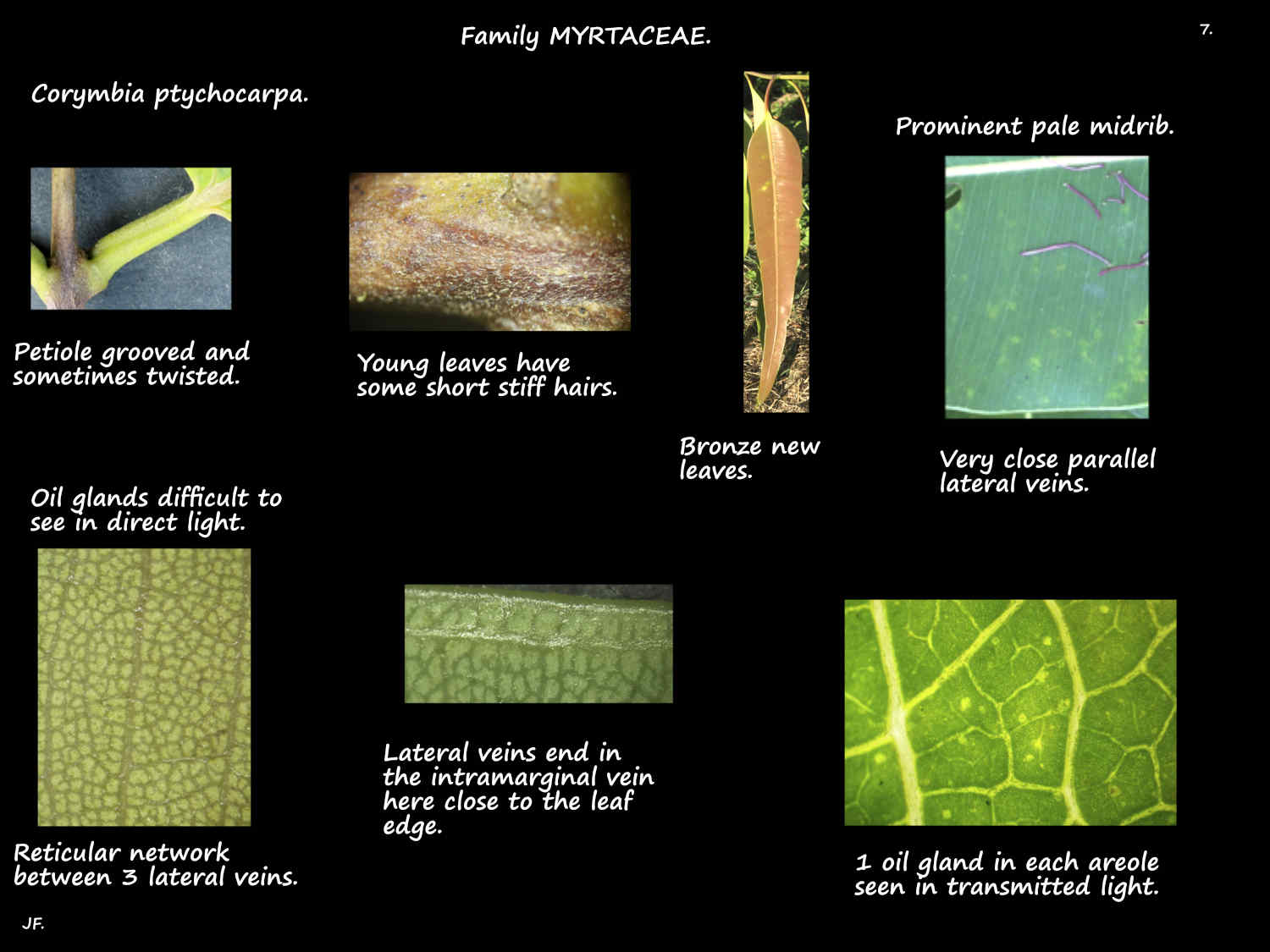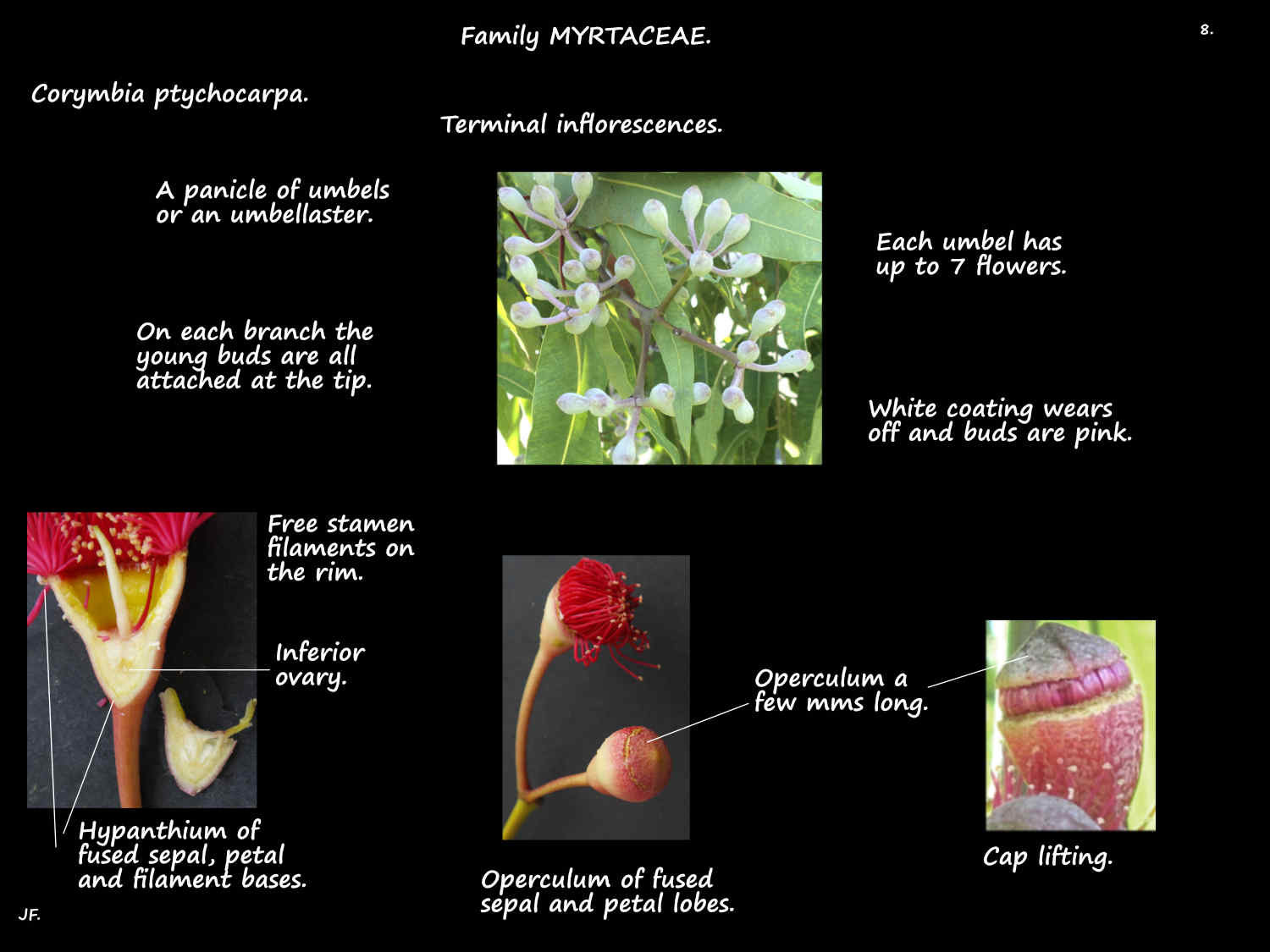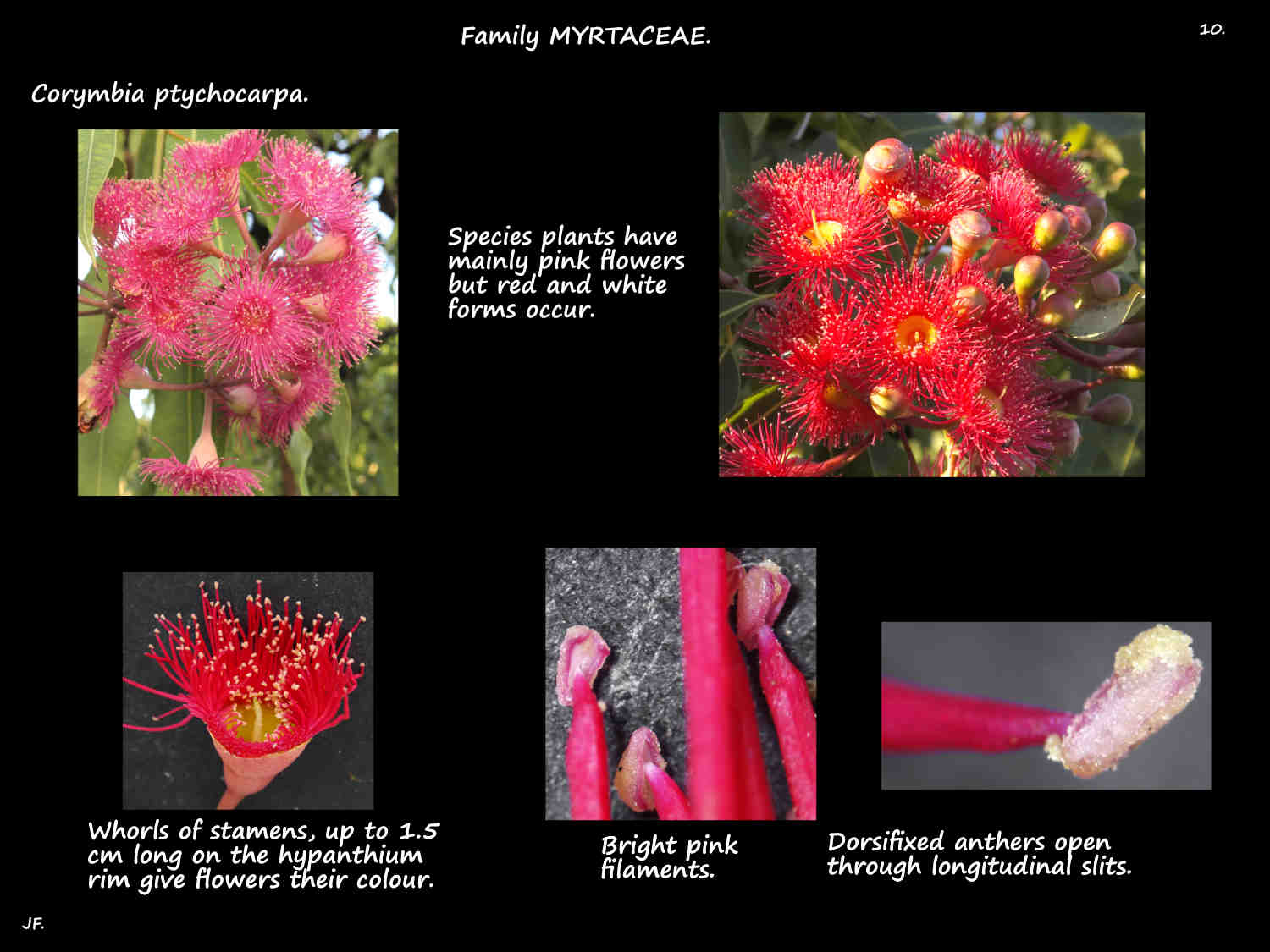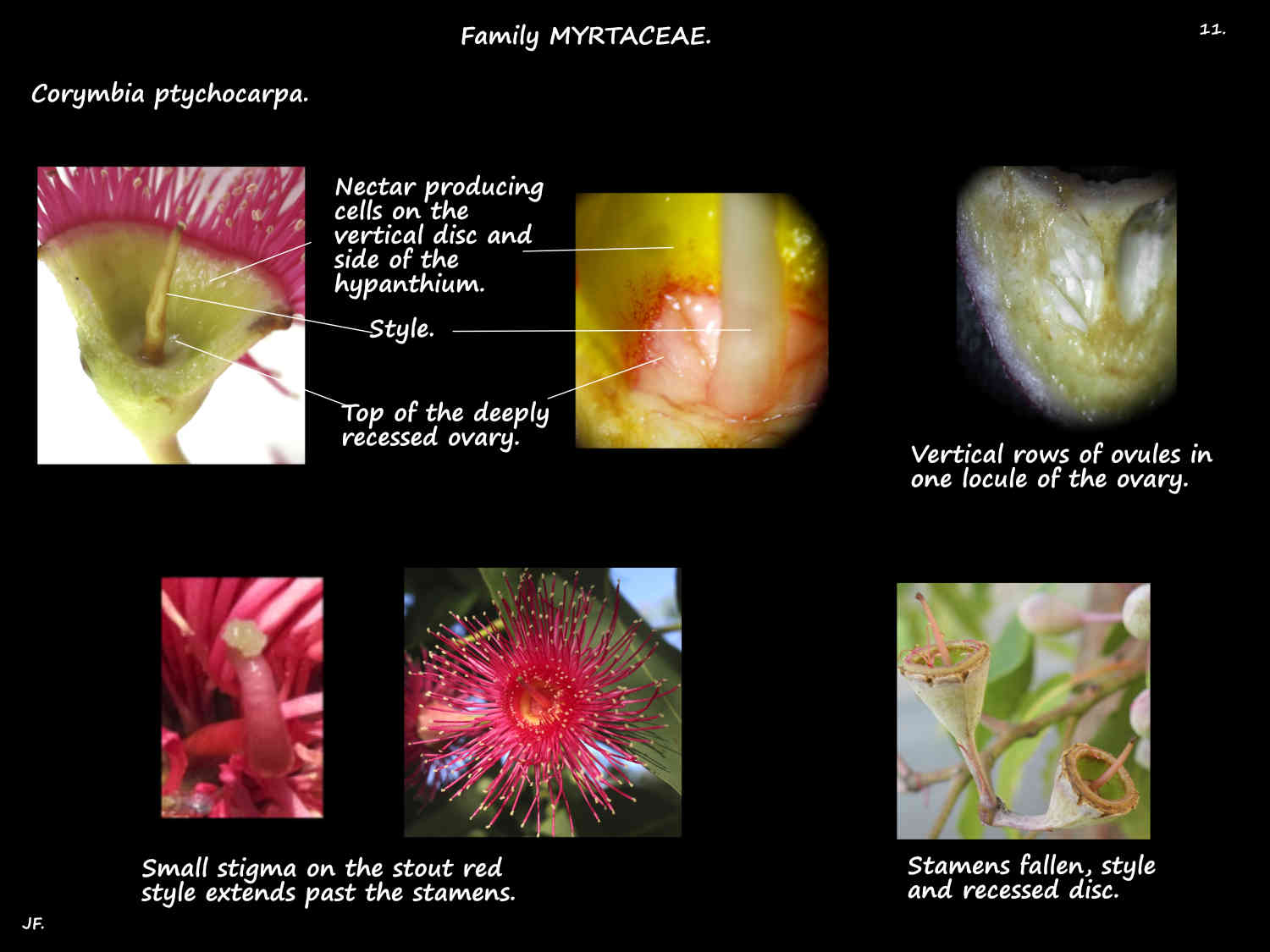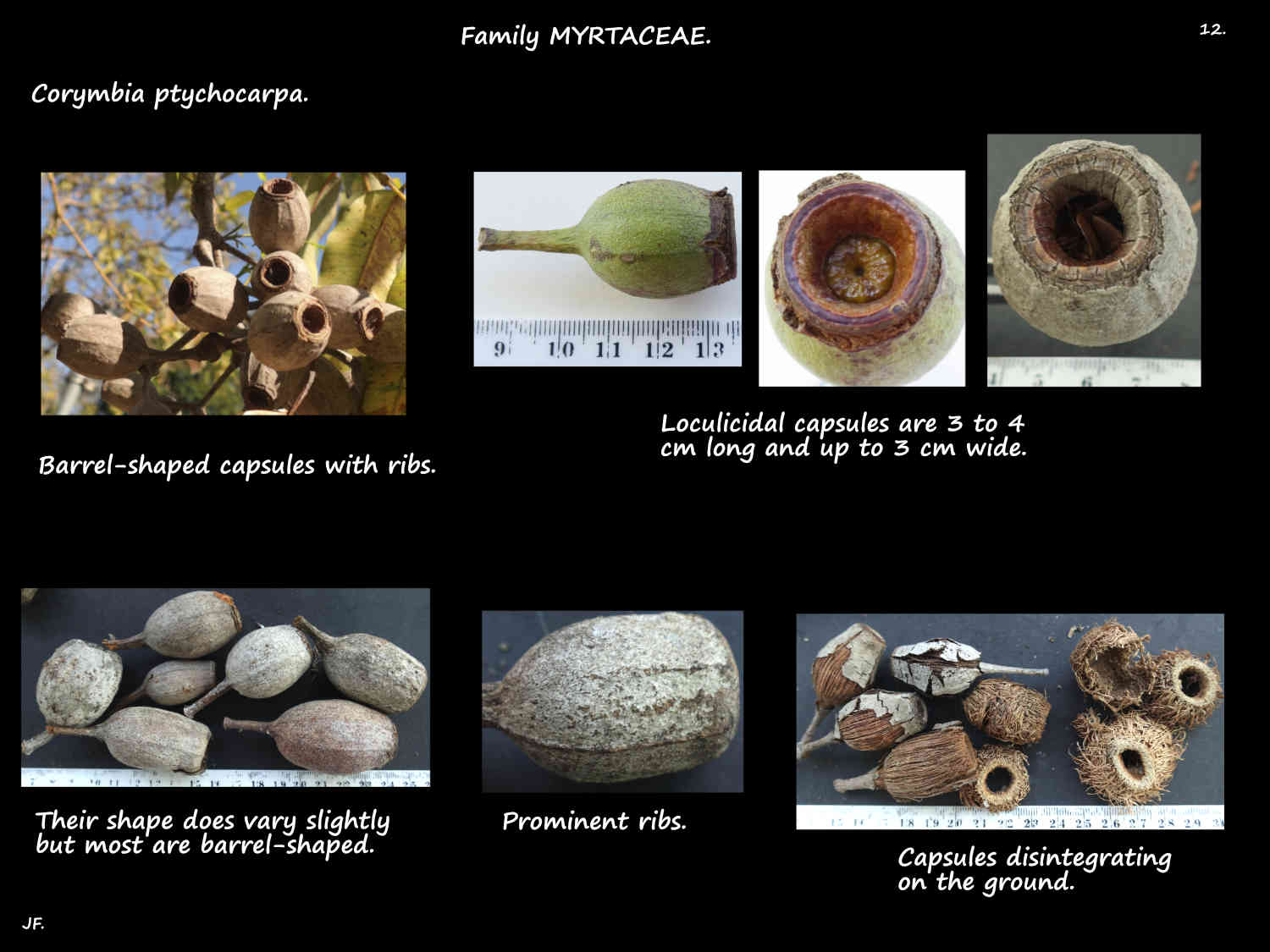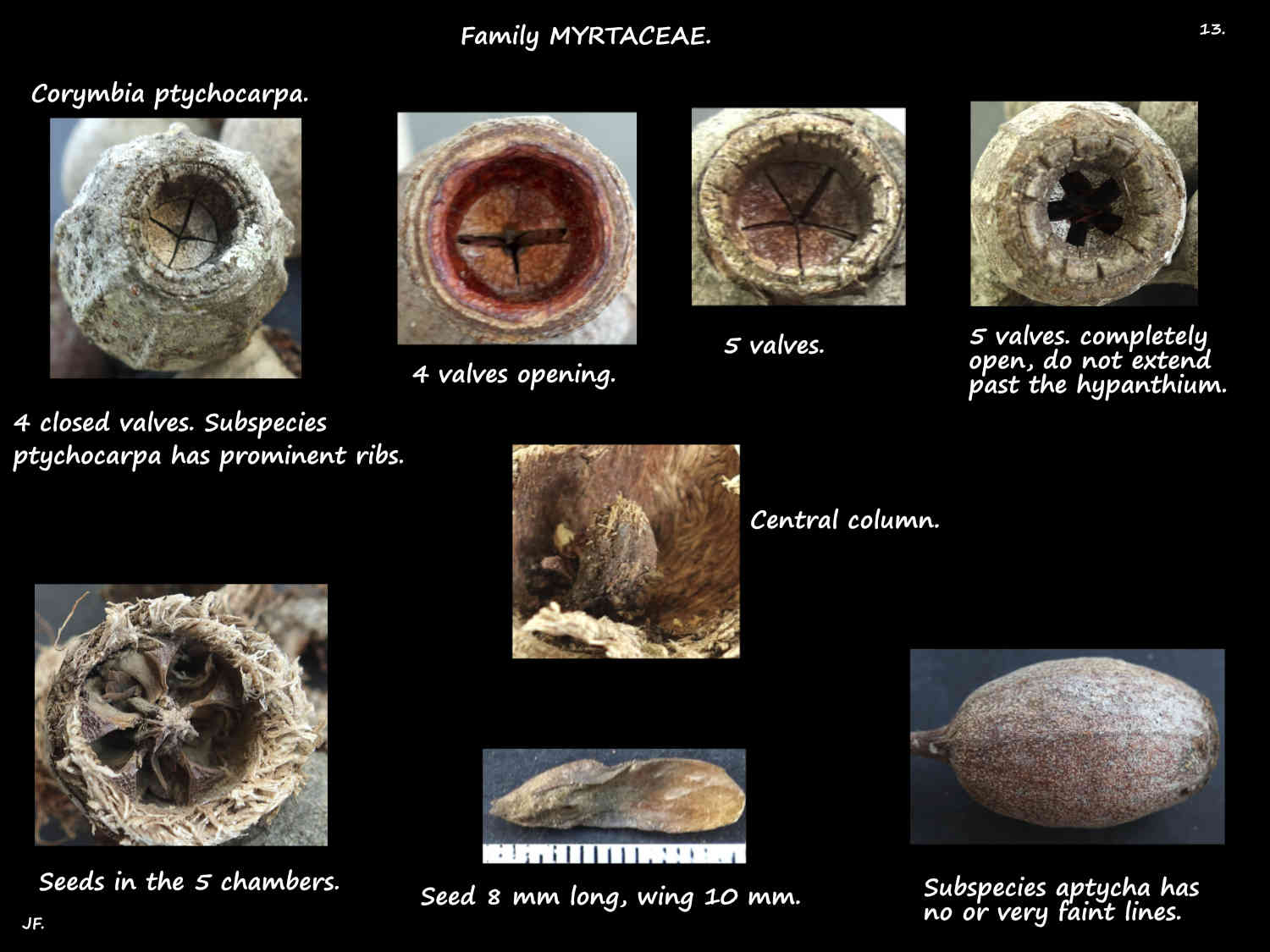The Swamp bloodwood is native to northern Australia.
Previously Eucalyptus ptychocarpa it is a common tree in Brisbane.
They can be recognised by their large leaves and capsules.
They are a small tree usually seen in Brisbane below 10 m high but they can reach 20 m.
They have a lignotuber from which new stems can grow.
Not always a nice symmetrical tree they can have crooked branches that may droop.
The small angled or round twigs are smooth.
The rough brown or grey-brown bark is not deciduous.
It is thick and fibrous and can be pulled off in small pieces.
It sometimes becomes tessellated when it breaks into regular angled pieces that form a pattern.
The dull juvenile leaves are on a petiole under 1 cm long.
At the first few nodes the leaves are opposite.
Further down the stems they become increasingly sub-opposite.
Round to oblong or elliptic they are up to 10 cm long and 4 cm wide.
The base is rounded, the tip blunt with a short narrow point and the edge smooth or finely lobed.
There are small bristly hairs and the lower surface is paler.
Adult leaves, on a petiole up to 3 or 4 cm long are alternate.
The leathery blades can be up to 30 or 40 (45) cm long.
Up to around 12 cm wide they are typically a narrow to wide lance-shape.
The base can be rounded or flat and the tip often tapers to a point.
Blades are green above and markedly paler underneath.
The smooth blades have a prominent yellow midrib and close parallel lateral veins.
The intramarginal vein is very close to, or at the blade edge.
The small reticular veins between the laterals are prominent.
The areoles formed by the reticular veins each have 1 oil gland that may be difficult to see.
Terminal inflorescences, on a peduncle are held beyond the leaves.
The thick primary peduncle, 3 to 4 cm long branches to form a panicle.
Terminal branchs end with 3 to mostly 7 flowers in an umbel (all attached at the tip).
Flowers are on a thick pedicel around 3 cm long.
The mature club-like (obovoid) buds, up to 2.5 or 3 cm long are ribbed and covered in small scales.
The hypanthium, up to 2 cm long consists of the fused bases of the sepals, petals and stamen filaments.
The 5 fused sepal lobes form an outer operculum or cap.
This, and the inner operculum of the 5 petal lobes are shed together.
The operculum, under 10 mm long is rounded or conical with a blunt tip.
The white to pink buds are covered in small scales.
It may have distinct ribs or just vertical lines.
There are numerous stamens that, in the bud are curved sharply inwards.
As the flowers open the free filaments open out making the flowers 5 to 6 cm across.
The filaments are mostly pink but can be red or occasionally white.
The dorsifixed anthers open through longitudinal slits.
The inferior ovary, of 5 fused carpels has 5 locules with vertical rows of ovules.
The long style extends past the stamens.
The hard woody fruit, known as ‘gumnuts’ are loculicidal capsules.
On a stalk, they are over 3 to 4 cm long and up to 3 cm wide.
They are barrel-shaped or sometimes cylindrical.
The scurfy surface may have prominent ribs.
The disc (on top of the ovary) and the 4 or 5 valves are deeply recessed.
The numerous flattened brown seeds are around 15 mm long including the wing at one end.
There are 2 subspecies recognised.
1. Corymbia ptychocarpa subsp. ptychocarpa has prominent ribs on the buds and the up to 5.5 cm long capsules.
2. Corymbia ptychocarpa subsp. aptycha has no ribs or up to around 10 faint longitudinal lines.
J.F.

